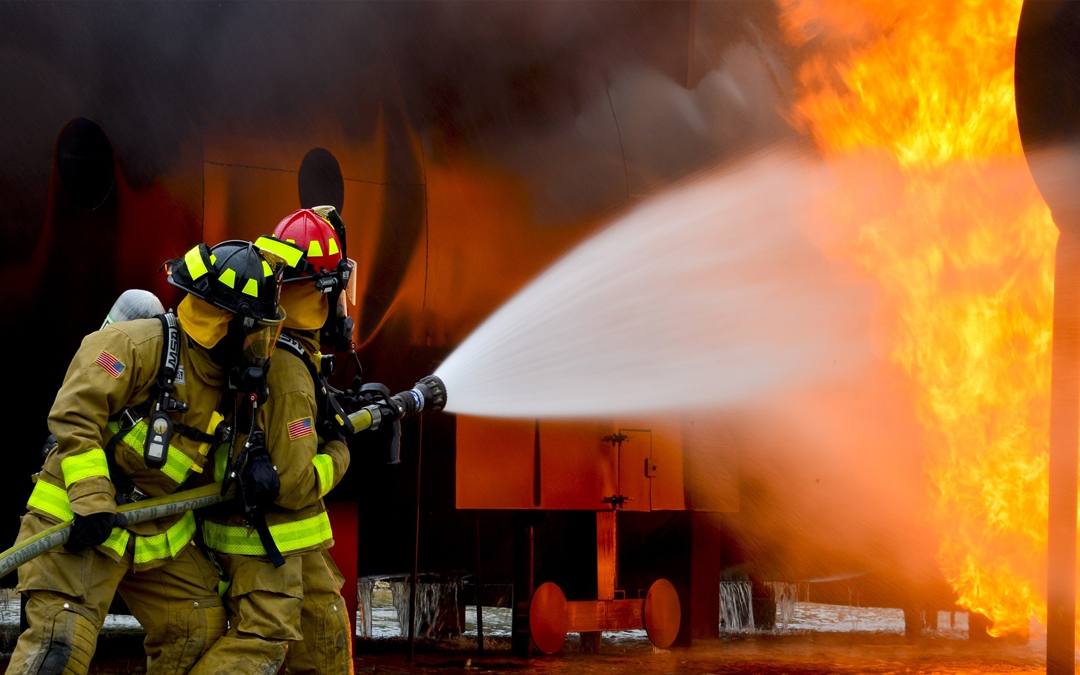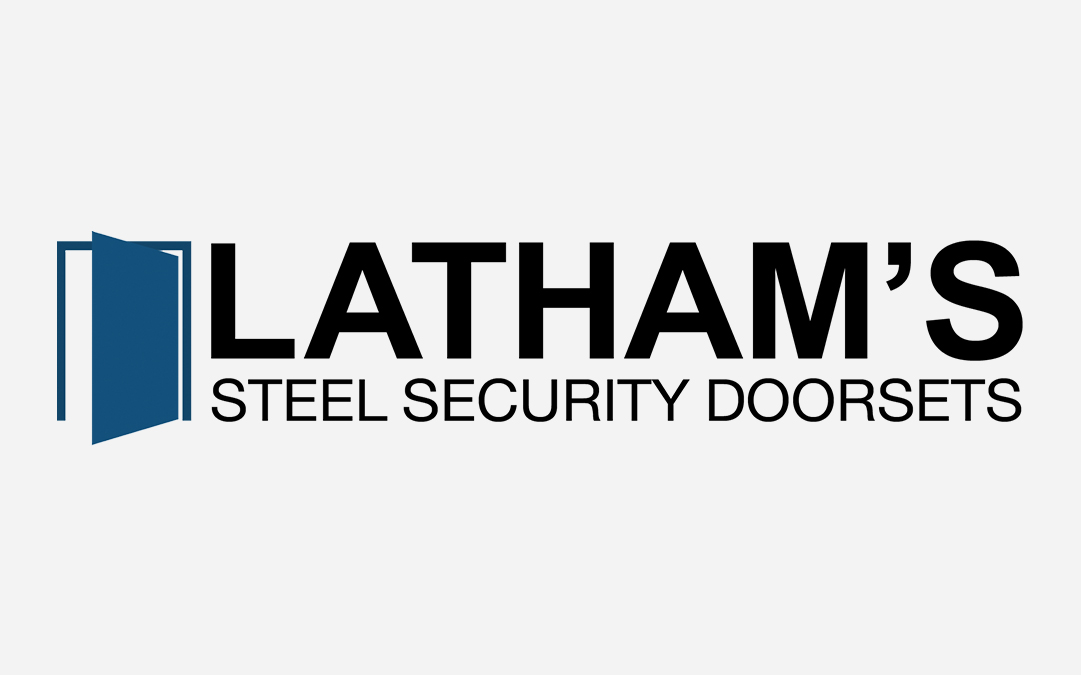Fire doors are specialist doors manufactured and tested to withstand fires and resist the spread of a fire in a home or commercial property. Fire doors come with fire door ratings, which indicate how much time the fire door will provide fire protection. In this blog, we look in detail at fire door ratings, the importance of having a fire-rated door, and where to use them.
- How do Fire Doors Work?
- What are fire door ratings?
- What are the different fire door ratings?
- Why are fire door ratings important?
- Which fire rating do I need?
- Are there any building requirements that require certain ratings?
- Who certifies fire doors?
- Can you customise a fire-rated door?
- Do the door materials make a difference to the fire door rating it receives?
- How to know if your door is fire-rated?
- Maintenance of Fire Doors
- Upgrade your fire doors today
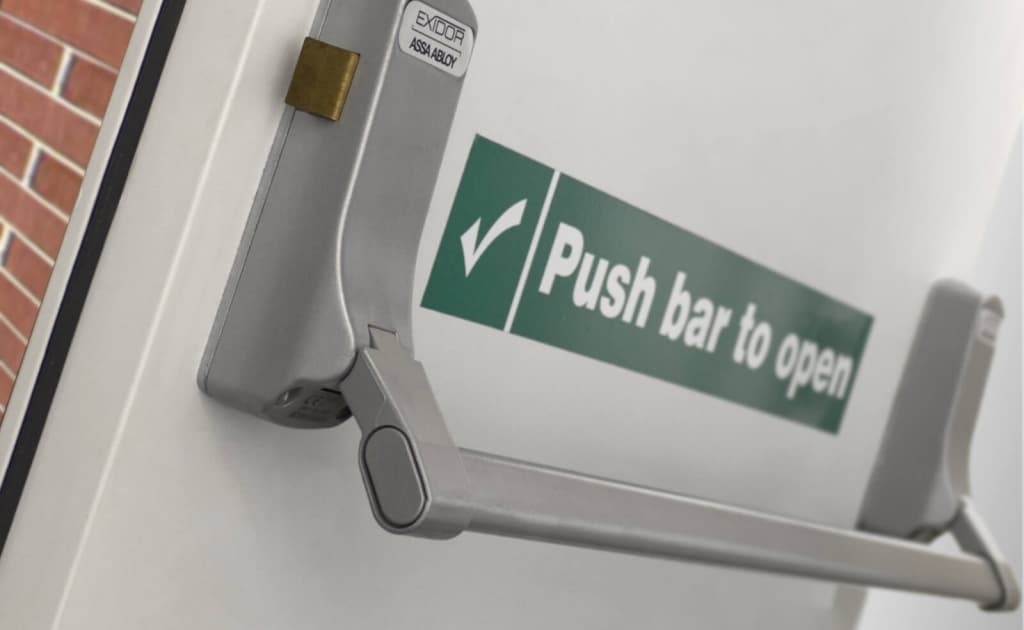
Many important changes have been made to fire door ratings and regulations since the fatal fires at Grenfell Tower in West London in June 2017, where 71 residents lost their lives. From January 2023, the Fire Safety (England) Regulations 2022 will make it a legal requirement for responsible persons for all multi-occupied residential buildings in England with storeys over 11 metres in height to:
The regulations will also require responsible persons to provide residents of all multi-occupied residential buildings with two or more sets of domestic premises (that have common parts) information on the importance of fire doors to a building’s fire safety.
How do Fire Doors Work?
A fire door installed in the right place will act as a barrier to fire and smoke and stop it from spreading from one room to another. Manufactured to meet specific standards, fire doors must have particular features, including fire resistance, minimal spacing between the door and surrounding walls, an automatic closing system, and smoke sealing features. The two most important functions of a fire door are:
- Forms a barrier to stop the spread of fire when closed
- Provides a means of escape when opened.
What are fire door ratings?
Fire door ratings provide a consumer with the length of time the door-set and its materials will be able to withstand fire. Depending on the rating, it is either 30 or 60 minutes. Certified fire doors save lives. Having a certified fire door installed can be the difference between life and death.
What are the different fire door ratings?
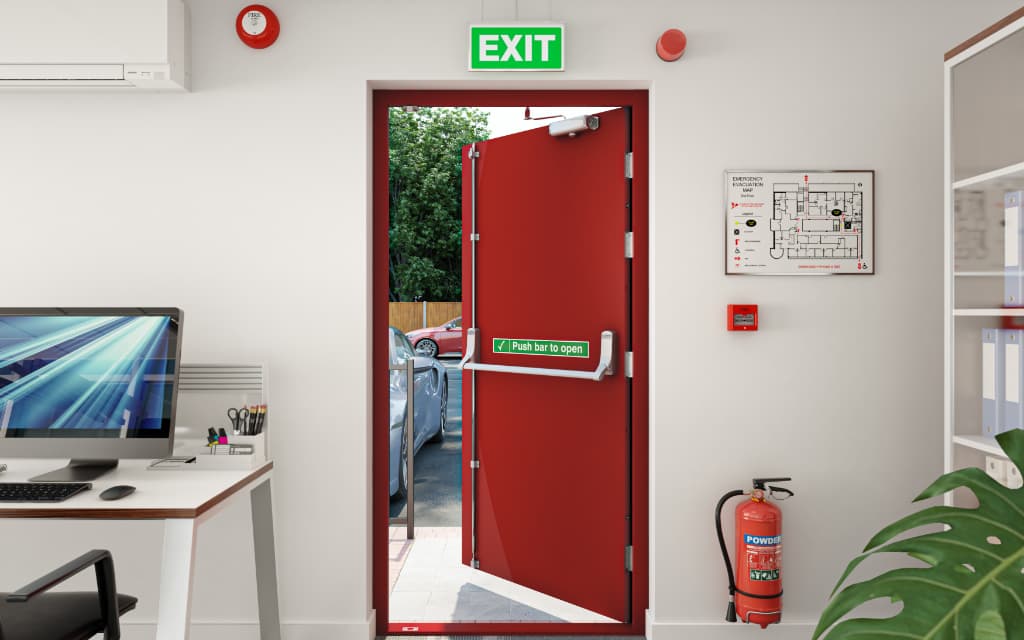
Fire doors generally come with the same features and should meet all the necessary safety standards. However, where they differ is the level of fire resistance. The certified rating of a door is represented by FD, followed by a number, which indicates the total number of minutes a fire door maintains its structural integrity in the event of a fire.
The four most common fire door ratings are:
| Door rating | Minutes of fire resistance | Description |
|---|---|---|
| FD30 | 30 minutes | Most commonly used & recommended by fire safety standards. High level of protection if several are along a route. |
| FD60 | 60 minutes | Commonly used where a fire door seperates two buildings. |
| FD90 | 90 minutes | Anything higher than 30 and 60, usually means the owner wants to ensure the building itself and anything within it is preserved, such as important documents. |
| FD120 | 120 minutes |
Some fire doors may also differ in terms of the material used. This can include fire-resistant glass and metal instead of wood. They must also meet the necessary fire safety standards. Fire doors with fire-resistant glass are given an ‘E’ classification, rather than FD. E30 and E60 classifications are similar to FD30 and FD60, in that they limit the passage of fire by 30 or 60 minutes.
Why are fire door ratings important?
In the year ending June 2022, there were 26,959 dwelling fires, and 13,205 other building fires, according to the Office of National Statistics. This means that thousands of businesses and lives are put at risk when unsafe fire doors are installed on a property. Fire door ratings indicate how much fire resistance a certified fire door can withstand. They also help to guide the consumer as to whether the fire door will offer enough protection to a building and the belongings inside.
Which fire rating do I need?
It all depends on your particular requirements, the risk of a fire taking place, and what you need to protect. There will be different requirements for residential, commercial, and industrial properties.
| Residential | Commercial and Industrial |
|---|---|
| In residential properties, the most commonly used fire door is the FD30, which is physically tested against a temperature-controlled furnace to make sure that it achieves this minimum 30-minute standard. | With the risk of a fire taking place being higher, commercial and industrial properties may require FD60, FD90, and FD120 doors. Without properly functioning and installed fire doors with a higher FD rating, a fire could spread quickly throughout the building, making it difficult for people to evacuate in time. |
| FD30 doors can also be designed and manufactured to be aesthetically pleasing, making them ideal for homes. | It’s also important to have a higher-rated fire door in a commercial property due to the risk of financial loss. According to statistics, the average financial loss per fire per business is around £657,074 per business. |
| Installing several FD30 doors creates compartmentalisation, where the fire’s spread is slowed down as the 30 minutes add up to a much higher number in total. | Still not sure which fire rating you require? Our team is on hand to give you further guidance on 01384 220 050 or email [email protected] |
Are there any building requirements that require certain ratings?
Fire safety is part of the design requirements of a building and it will be necessary to comply with local building regulations. Building regulations set minimum standards and must be met as a legal requirement.
Local building regulations, in England and Wales, in the form of Approved Document B offer details about minimum requirements for fire safety. The most basic requirement is: “The building shall be designed and constructed so that there are appropriate provisions for the early warning of fire, and appropriate means of escape in case of fire from the building to a place of safety outside the building capable of being safely and effectively used at all times”.
The size, use, and complexity of the building will be determining factors in how this requirement is met. For instance, in a more complex building or where people need assistance to escape, fire doors with higher fire ratings would be required.
Who certifies fire doors?
Warrigntonfire is a global testing, inspection, and certification company that delivers certification to the Fire and Building Products marketplace. The certification of fire doors in the UK is done by Warringtonfire via Certifire. This is an independent third-party passive fire product certification scheme that is recognised by regulatory authorities worldwide as an international mark of fire safety.
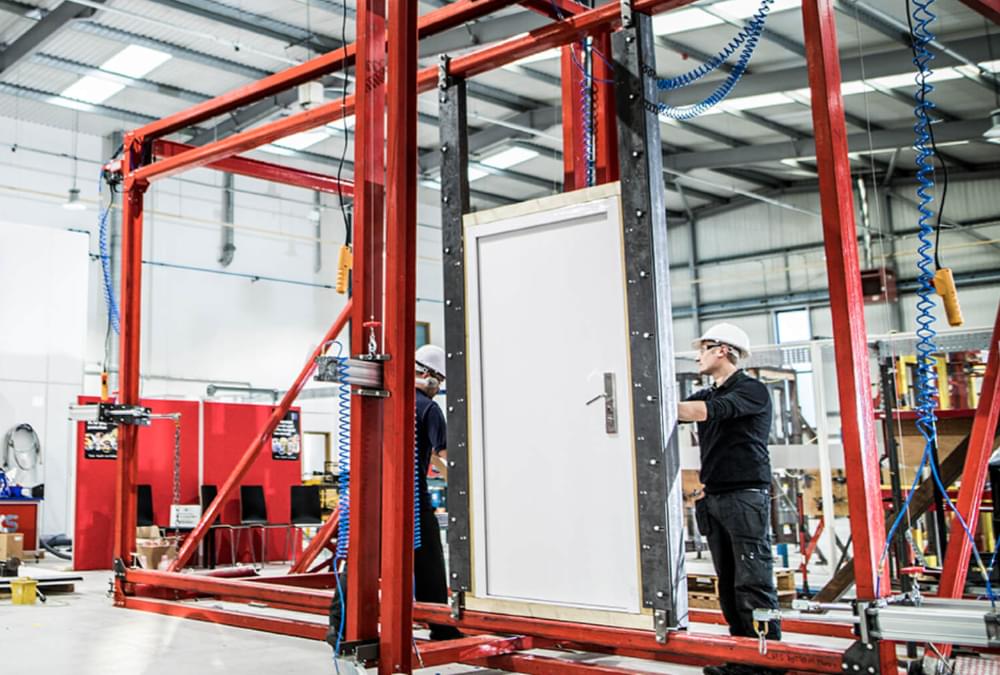
How are fire doors tested?
The fire door is fixed in a wall similar to the one installed on-site. One side of the door is exposed to the heat conditions expected in a fire. During the tests, the upper part of the door will be under a small positive pressure, which recreates the conditions likely to happen in a fire. The fire door is tested from both sides to evaluate its performance when either face of the door is exposed to fire conditions. Throughout the testing, the door will be observed for stability and integrity. A combustible fibrous pad is also placed on the unexposed side of the door to see when it ignites.
How are fire doors certified?
- Evaluating – analysis of relevant test and assessment evidence to provide a clearly defined scope for certification of the product.
- Factory production control (FPC) audits – an FPC audit is performed at each site where the product is produced for the specific regional market.
- Sampling/Testing – during the FPC audit, they may sample the product for testing purposes that will be used as evidence towards the product certification.
- Producing and registering the certificate – the certificate is prepared based on supporting data, tests, and the results of the FPC audit. It will then be available for download from the Certifire product register.
- Completing a surveillance audit – a surveillance audit will be done every 12 months to ensure that the FPC systems continue to meet the qualification criteria.
- Ongoing requirements – product is reviewed every five years.
- Branding – certified products will carry the respected Certifire brand.
Can you customise a fire-rated door?
Fire doors have all been rigorously tested to ensure they meet specific requirements but can also be customised to suit your particular requirements. Fire doors come in a huge range of styles and designs and can be designed to suit the aesthetic of a home or business. This can be done by incorporating glazing, a variety of veneers, and ironmongery.
Do the door materials make a difference to the fire door rating it receives?
The grade a fire door is certified with is based on the materials used to manufacture the door. Fire doors are manufactured using different materials, with solid cores and differing fire-resisting properties. Door frames are also a factor in the grading system. For example, an FD30 fire door will come with an FD30 fire door frame. The frame has an intumescent strip, which when heated, expands to seal the gap between the door and frame to keep the fire from spreading. Here we look at the different fire doors available and the fire door ratings they are generally certified with.
Wooden Fire Doors
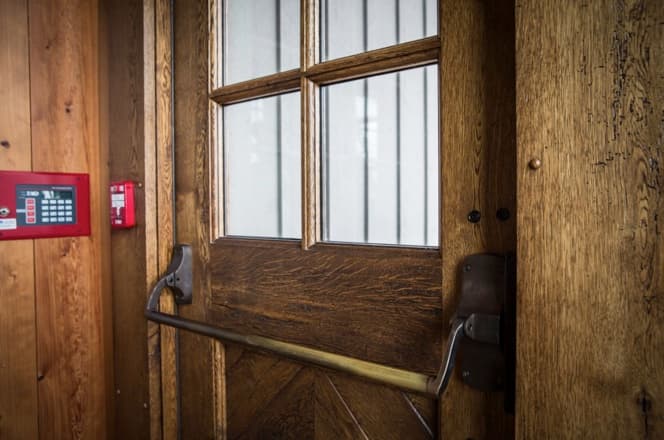
Wooden fire doors are normally used in residential properties. They provide fire protection for 30 – 60 minutes. Most wooden fire doors are thicker than standard doors – 44mm compared to 35mm. Usually made with a solid core made from timber, flax board, or particleboard. FD60 doors are 54mm with a hardwood frame. Along with an intumescent strip, all fire-resisting doors may also require smoke seals.
Glass fire doors
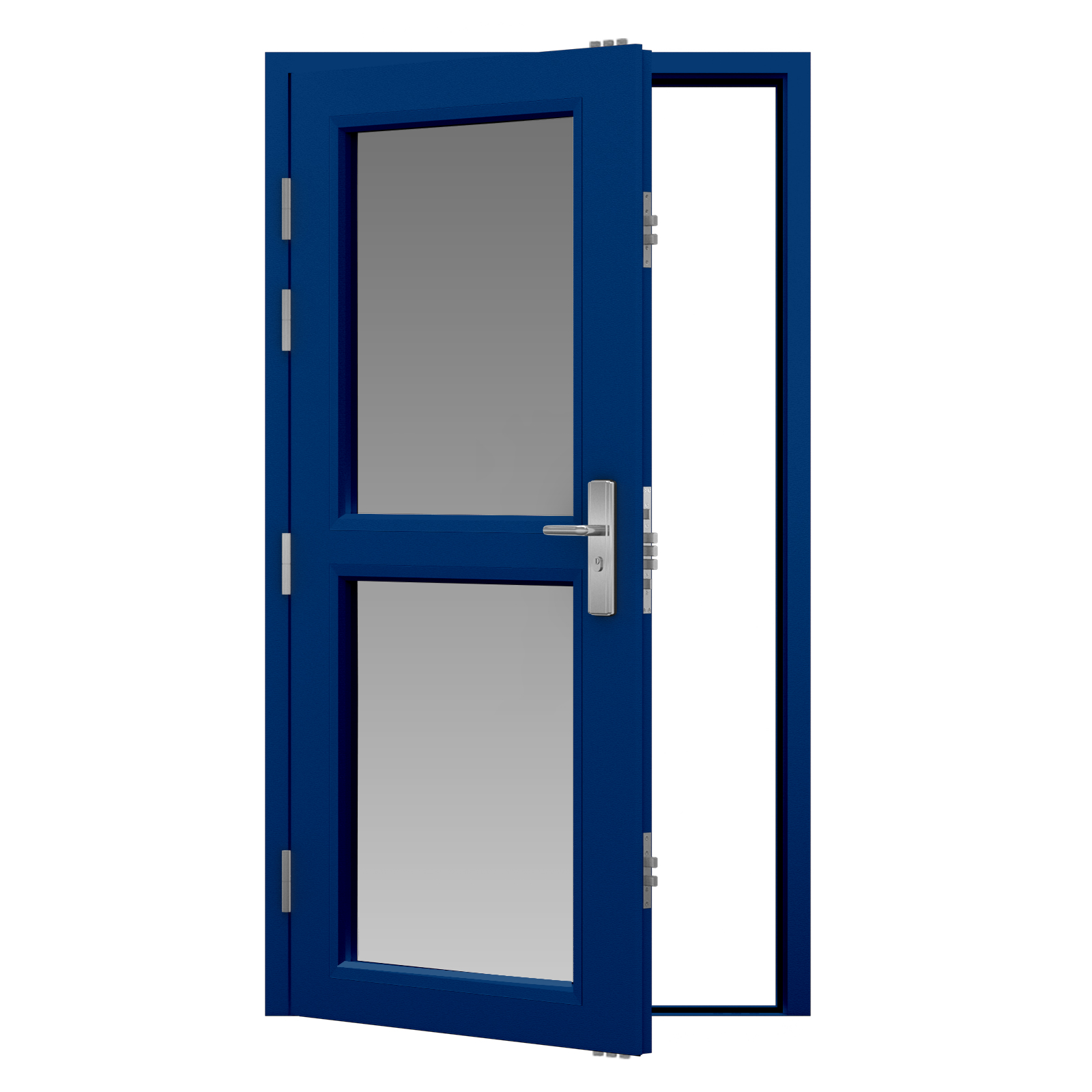
A glass fire door must be manufactured using fire-rated glass. Regular glass will shatter if the temperature is above 120℃, whereas fire-rated glass doors can withstand temperatures of up to 900℃. A fire glass door will last up to 60 minutes without cracking or breaking and will be certified with an FD60 rating.
Steel doors
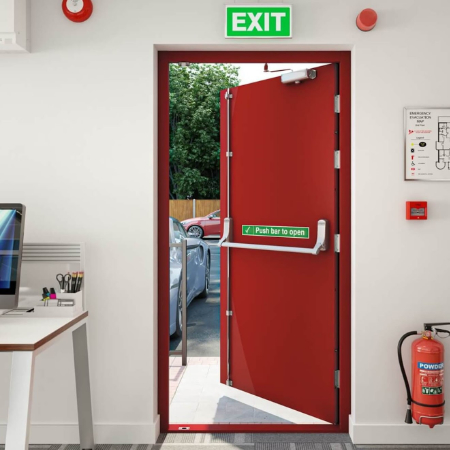
Often used in buildings such as hospitals and professional kitchens, steel doors are one of the best choices for fire doors in commercial buildings. Offering maximum protection and certified with FD120 (120 minutes of fire protection), steel fire doors are solid and durable.
How to know if your door is fire-rated?
The most reliable way to identify a fire door is to look for its certification label. A certification label is normally placed on the top edge of the door leaf. The label shows that the door has been manufactured to meet the requirements of third-party accreditation for a fire door.
Take a look at this diagram to show what the label will include:
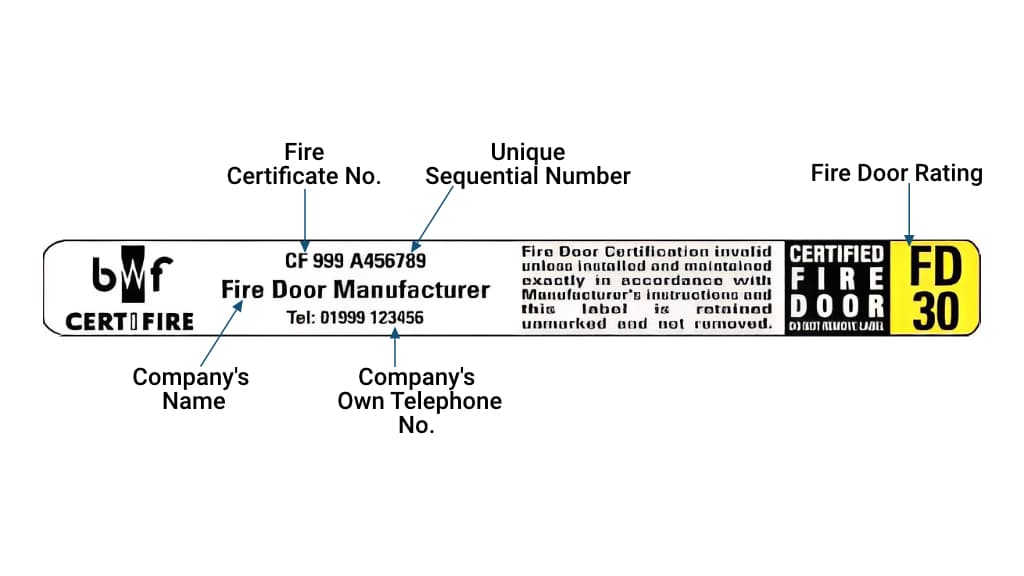
Maintenance of Fire Doors
In 2019, 76% of fire doors failed inspections, which highlights how we are not maintaining fire doors sufficiently. A poorly maintained fire door, or one that has not been installed correctly, will not be effective in stopping the spread of a fire.
How often should fire doors be checked?
BS 9999, which provides recommendations and guidance on the provision of measures to control or mitigate the effects of fire, recommends checking fire doors every six months. New buildings may need more frequent checks in the first year as doors acclimatise. High-traffic buildings should be checked more frequently as they are more likely to be damaged.
This is what to check and look out for:
Gaps
Check the gaps around the top and sides of the door. They should be consistently less than 4mm when the door is closed. To prevent smoke or fire from travelling through the tracks, any light should not be seen under the door.
Seals
Check to see if there are intumescent seals or strips in the door frame. These are designed to expand when a level of heat is detected.
Hinges
All hinges should be firmly fixed and there are no missing or broken screws.
Closures
Fire doors should always be fully closed and never wedged open as this would enable a fire to spread. Self-closing devices are often fitted to fire doors.
Remember, only trained installers/inspectors should carry out maintenance work on fire door hardware.
Upgrade your fire doors today
Our stock steel fire-rated doors are certified for up to four hours of fire protection, meaning they will cover all FD30, FD60, FD120, FD180, and FD240 requirements.
Ideal for applications such as commercial and industrial premises, they can also be used as a connecting door from your garage into your home. Find out more, here.


